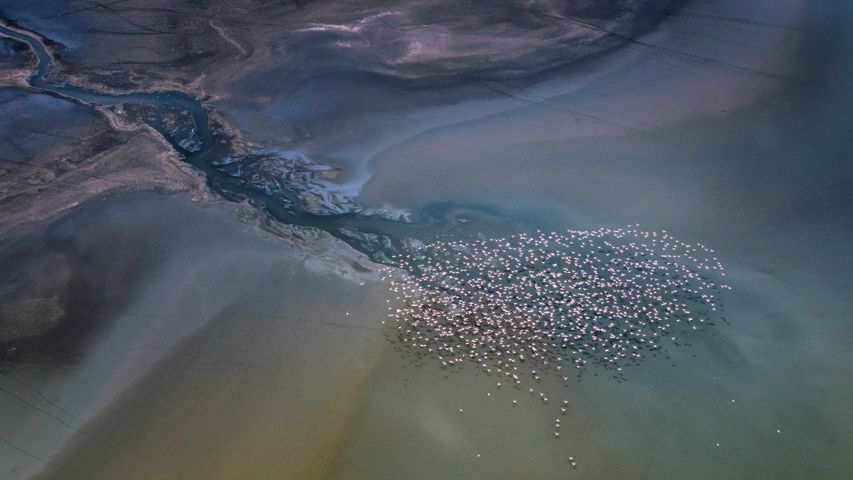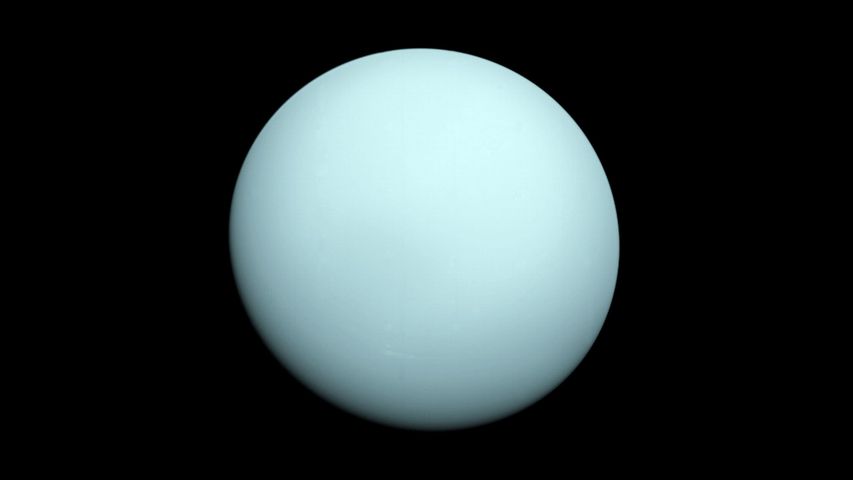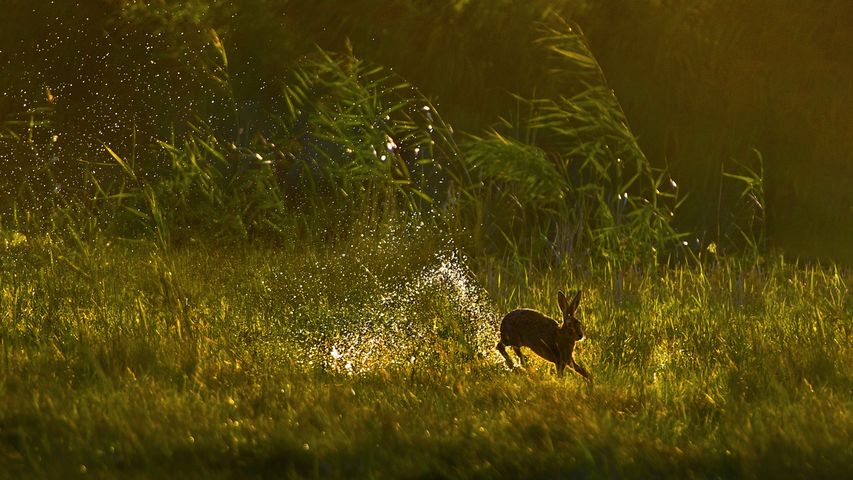A view of Uranus taken from spacecraft Voyager 2 in 1986
© NAS
Celestial shades of blue. A look at Uranus, seventh planet from the sun
British astronomer William Herschel first observed Uranus on this date in 1781, though the planet didn’t get its name for nearly another 70 years. Uranus was named after the Greek god of the sky—but has become the 'butt' of many middle-school jokes. (Sorry, we couldn’t resist.) The planet, along with Neptune, is considered an ‘ice giant,’ with most of its mass made up of a hot, dense fluid of ‘icy’ materials including water, methane, and ammonia all hovering above its small, rocky core. Uranus’ atmosphere is made mostly of molecular hydrogen and atomic helium, with some methane. It’s the methane that makes the planet appear blue—the chemical compound absorbs red light from the sun and reflects the blue light back into space. Not only is it cold out there, but it’s also a little lonely. Uranus can’t support life as we know it, and the unmanned space probe Voyager 2, which took this photo, is so far the only spacecraft to fly by.
Bing Today Images



 Robin's nest with a brown-headed cowbird egg
Robin's nest with a brown-headed cowbird egg
 Hoary redpoll nest in Lapland, Finland
Hoary redpoll nest in Lapland, Finland



